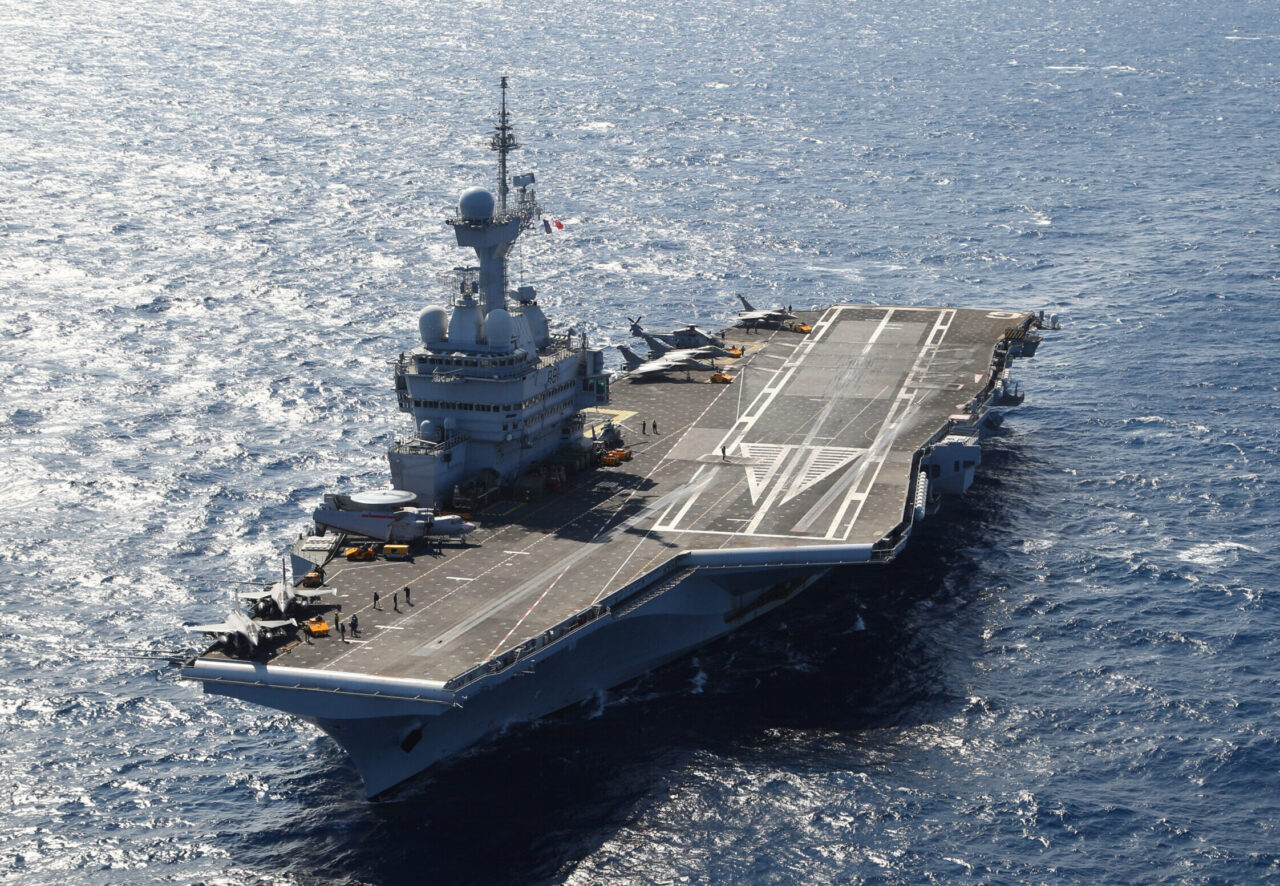When the Charles de Gaulle launched officially in 1994, it became the largest naval warship in Western Europe.
France officially launched the 2025 edition of its Polaris naval exercise this week, a massive multi-domain drill involving resources from all of the country’s military services. Overall, Polaris 25 will incorporate 3,000 French and foreign military personnel, where high-intensity exercises are set to take place on the French and English coastlines. Several of France’s allied partners are participating in Polaris 25, including the United States, the United Kingdom, Portugal, Spain, Brazil, Germany, Italy, and the Netherlands. According to a statement made by the French Navy, “The Polaris 25 exercise pits two symmetrical forces against each other in a free-play scenario, under conditions close to reality. Polaris 25 is notable for its duration, with an initial phase dedicated to hybrid action in attack and defense, and for the scale of the resources deployed on the Atlantic coast.” While a wide array of the French Navy’s warships is involved in this operational readiness exercise, the flagship of the service is notably not present. The Charles de Gaulle aircraft carrier is currently involved in an Indo-Pacific deployment called CLEMENCEAU 25.
Introducing the Charles de Gaulle Aircraft Carrier
Representing the sole nuclear-powered aircraft carrier operated outside of the United States, France’s Charles de Gaulle is an impressive warship. Notably, the French carrier can launch aircraft at a faster maximum rate than the Paris Charles De Gaulle Airport. In terms of aircraft, the carrier carries a complement of Dassault Rafale M, E-2C Hawkeyes, AS365F Dauphin Pedros, EC725 Caracals, and AS532 Cougar helicopters for combat search and rescue. The Charles de Gaulle’s ability to launch these aircraft at such a fast rate is thanks to its USN-type C13 catapult, which is capable of launching one aircraft per minute onboard.
Initially, the massive carrier was named to honor the French Cardinal Richelieu, but Charles de Gaulle earned its current name in 1987 under the leadership of Prime Minister Jacques Chirac. When the French vessel launched officially in 1994, it became the largest naval warship ever to be introduced in Western Europe. In addition to its advanced USN-type C13 catapult, Charles de Gaulle features the Sagem Defense Security DALAS laser landing aid and other sophisticated sensors. Over the years, the French carrier has undergone several facelifts in order to incorporate emerging technologies. In 2007, Charles de Gaulle’s propellers were replaced during an overhaul, and in 2017, its combat system was enhanced. Equipped with new and improved propellers, the hefty warship can now reach speeds in excess of twenty-seven knots.
Charles de Gaulle’s Operational History
As the flagship of the French Navy, Charles de Gaulle has played an instrumental role in the nation’s overseas operations. In the early 2000s, the carrier deployed to the Indian Ocean as part of the allied effort countering Taliban-controlled Afghanistan. In the following years, the French warship took part in more NATO maritime defense network operations, including many joint naval exercises. In 2015, Charles de Gaulle played an important role in supporting NATO operations against the Islamic State. Considering the carrier’s track record, the French warship is considered to be a tried and trusted warship across the globe.
About the Author: Maya Carlin
Maya Carlin, National Security Writer with The National Interest, is an analyst with the Center for Security Policy and a former Anna Sobol Levy Fellow at IDC Herzliya in Israel. She has by-lines in many publications, including The National Interest, Jerusalem Post, and Times of Israel. You can follow her on Twitter: @MayaCarlin. Carlin has over 1,000 articles published over the last several years on various defense issues.
Image: Joris van Boven / Shutterstock.com
